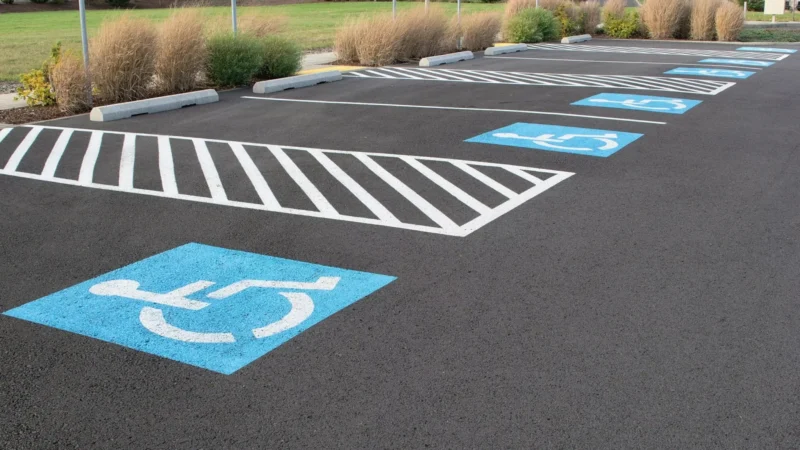While most things in Jacksonville have rebounded to pre-pandemic levels, the percentage of students who are attending class has not.
This academic year, 27.3% of Duval County Public Schools students have missed at least four weeks of class.
That’s fractionally better than the 27.4% of students who missed at least four weeks of class in the 2022-23 academic year and nearly double the 15.6% of students who missed four weeks in the last full year before the COVID-19 pandemic.
Students who miss at least 10% of the school year for whatever reason are considered chronically absent. In Florida, that equates to missing 21 days of school.
Duval’s 2022-23 chronic absenteeism rate was the highest of the state’s seven large, urban school districts, according to data from the Florida Department of Education.
Duval is not the only district that has grappled with how to encourage and entice students to earn an education by physically showing up to school.
Earlier this year, the American Enterprise Institute presented research on chronic absenteeism since the pandemic. The research from the center-right think tank has been cited by national and local outlets alike. Its findings: At its current rate, chronic absenteeism across the country will decline to pre-pandemic levels by 2030.
Nat Malkus, a senior fellow and deputy director for education policy at the institute, noted that chronic absenteeism is not solely an issue for urban or under-resourced districts. Between 2018 and 2022, rural districts saw chronic absenteeism rise from 15% of students to 27%, and suburban districts saw its rate double from 13% to 26% during the same period.
“Chronic absenteeism, as we’re seeing it, represents a cultural change that is going to affect the productivity of schools -- (and) not for the better,” Malkus said in a presentation in February. “I don’t think technological innovations or reinventing schools is going to turn around this cultural change.”
In Duval, principals, administrators and School Board members all agree that if students arrive, they will not only thrive, but graduate.
Christina Knopf, the district's director of research, evaluation and data, told the School Board earlier this year that efforts to reduce chronic absenteeism have helped the district's dropout rate decline from 4.1% for students who would have graduated in 2013 to 1.2% for the class of 2023.
“Now is the time to take a look at the student’s attendance and fix any issues that you’re seeing to get them there for the future," Knopf said in February.
By the end of this week, more than 7,000 students across Duval County will have received their high school diploma. Interim Superintendent Dana Kriznar says the district is on pace to exceed last year’s record-high 87.2% graduation rate.
The district’s Graduation Rate Initiatives Team -- or GRIT -- was created in 2015 to help English Language Learners adjust to school here and more. Since then it has held ride-alongs with school personnel as well as home visits to dissuade student dropouts.
Alongside its efforts to spur students to the graduation stage is an effort to curb chronic absenteeism.
In February, GRIT leaders told the School Board that attendance was a bigger indicator than proficiency on state tests of who will graduate from high school in Duval County.
That revelation surprised some board members.
“Our goal this year is for every traditional high school to have at least a 90% graduation rate,” GRIT Director Rhonda Motley told the School Board in February. “We’ve increased our school support in order to reach this goal. Increasing our data chats, locating disengaged students more than ever before, and we are locating those students before they enter the ninth grade so we can help support them as they enter high school.”
Later in the February presentation, Kriznar debunked the myth that some students are graduating from Duval schools without knowing how to read. She highlighted how Raines principal Vincent Hall personally visits students on Tuesdays and Thursdays to encourage them to remain engaged and enrolled in school.

Last year, 94.4% of Raines students graduated.
“It’s not hyperbole to say they know each one of those students one by one,” Kriznar said of the GRIT team in February. “I want to point out what our high school principals do. They also know their students one by one.”
Despite Hall’s best efforts, the percentage of Raines students who have missed at least 21 days of school since the pandemic has skyrocketed.
This year, 55.9 % of Raines students missed at least 21 days of class -- the highest rate at any of the 14 traditional high schools in the district. In the 2018-19 academic year, that percentage was 13.7%.
Nevertheless, 90% of Raines’ class of 2024 enrolled in and passed either a college level course or received industry certification. The district estimates its graduates have earned $8.5 million in academic and athletic scholarships.
Dropout prevention charter schools like Lone Star High School (96.5%) and Biscayne High School (93.6%) exceeded Raines’ chronic absenteeism rate this year.
Throughout the county, charter schools not only have a higher percentage of students who are chronically absent than traditional schools. They also have a lower graduation rate than traditional schools.
Last August, Duval’s chief of schools, Scott Schneider, told a joint meeting of the Jacksonville City Council and Duval County School Board that the only way to increase literacy rates -- and for the district to meet its goal of having every school earn at least a C from the Florida Department of Education -- is to keep students in school.
Devoting money to academic support may not be the only solution.
School Board Vice Chair Charlotte Joyce acknowledged earlier this academic year that attendance may factor into the district’s poor performance compared to its peer districts in the state in terms of student achievement.
Board member Warren Jones also tied chronic absenteeism to poor performance in statewide testing.
“We’ve been grappling with reading rates for a long time; but, there is one, missing element that we keep … not adding it to the discussion is attendance,” Jones said during a board workshop April 23. “If the kids are not there -- and they’re not there on a consistent basis -- then it does cause our numbers (to drop).”
In the 2022-23 academic year, the six elementary schools with the lowest percentage of third grade students proficient in statewide reading assessments had at least 39.5% of their students miss at least four weeks of school.
Students who take the test are assessed into five levels. Level 1 is the lowest and Level 5 is the highest. Students who are categorized in Levels 3 or above are considered proficient in reading.
Last year, 40% of Duval County third graders who scored a Level 1 in English Language Arts on the Florida Standards Assessment missed at least 20 days of school. A quarter of third graders who scored Level 3 missed 20 days of school. Meanwhile, only 12% of third graders who earned the highest reading score last year missed more than 20 days of school.
“I don’t think it was too surprising to see that many Level 1’s had more than 20 days absent," Knopf said in February. "That’s a lot. The number for Level 5’s was also a little high. I didn’t expect it to be 12%. I expected it to be single digits.”
This year’s third-grade reading scores will not be revealed until the summer. But, if this year’s attendance is any indicator, Duval may once again lag behind its urban peers.







